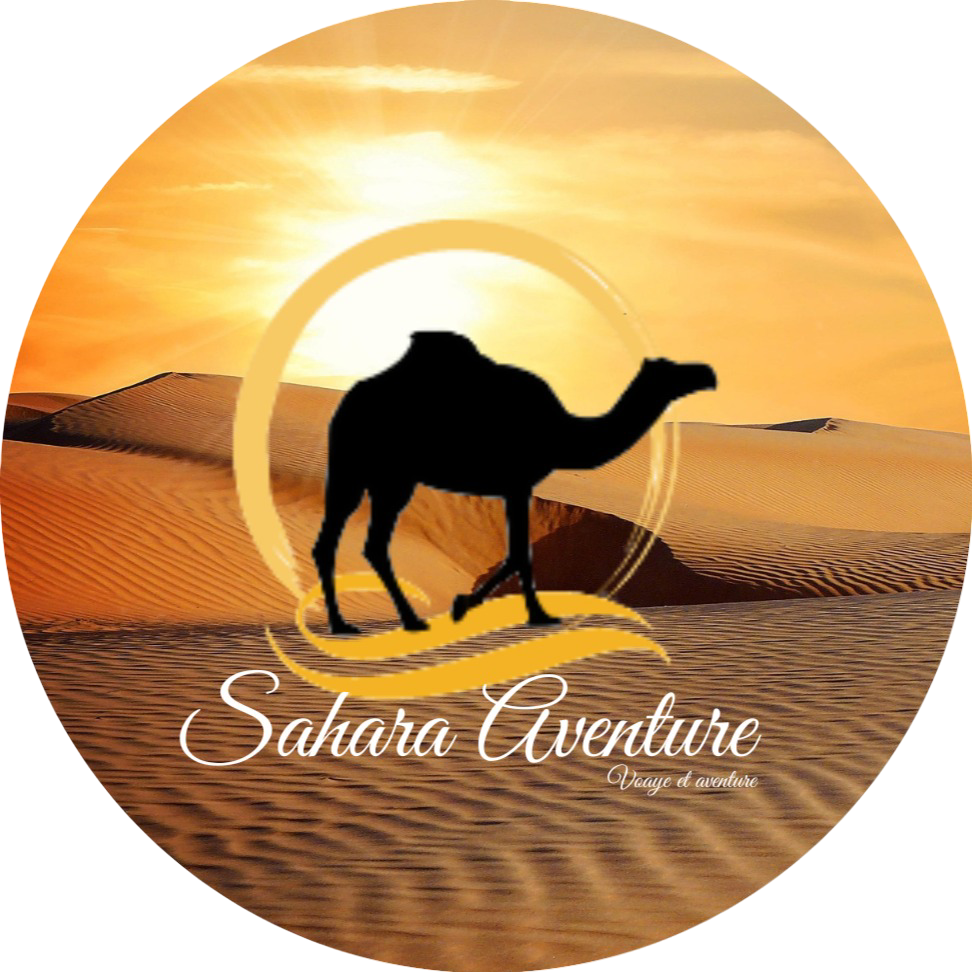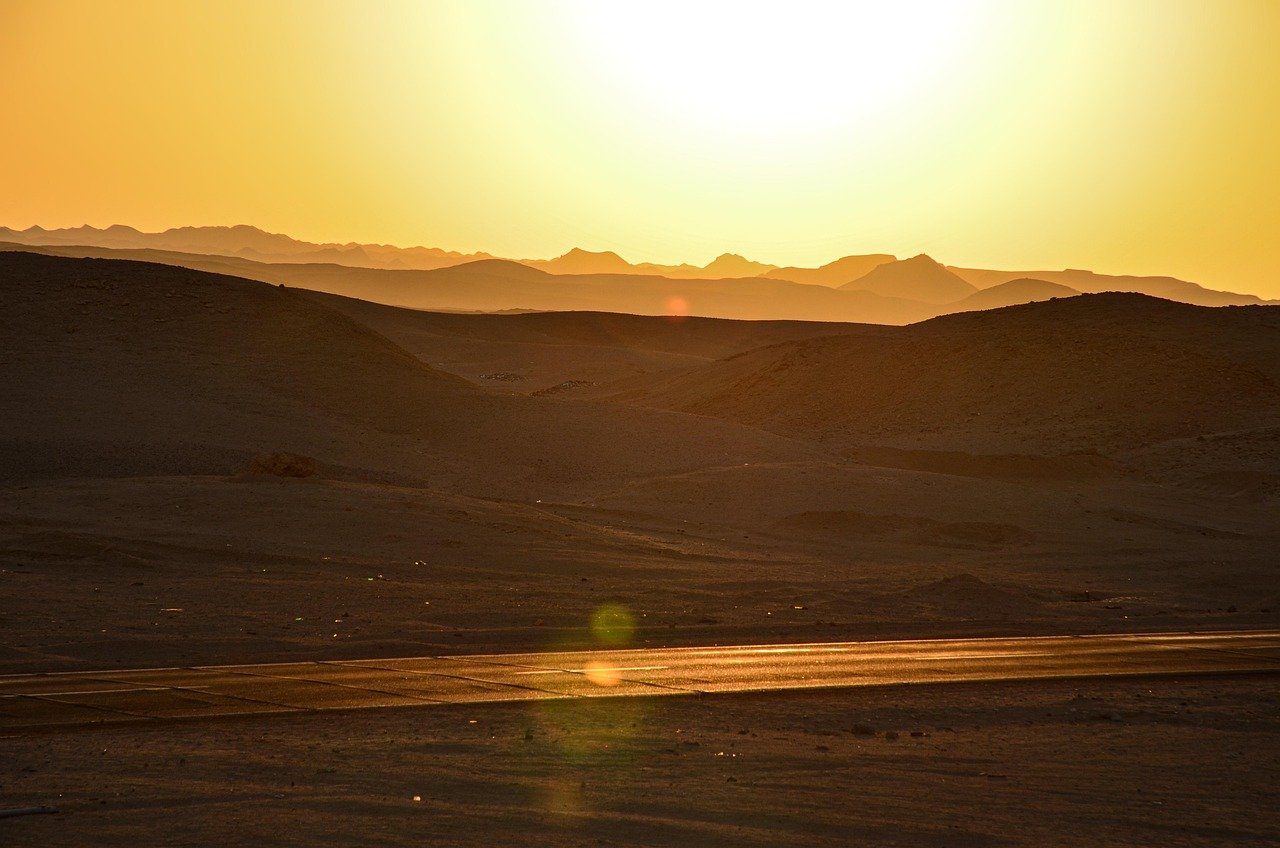The Moroccan Desert Through the Seasons
Choosing the right time to explore the Moroccan desert isn’t just about avoiding the heat—it’s about experiencing the Sahara in all its beauty. Here’s what each season has to offer.
SPRING (March to May) – The Ideal Balance
🌤 Mild Temperatures and Blooming Landscapes
Spring is arguably the best time to visit the Moroccan desert. Daytime temperatures are pleasant (between 25°C and 30°C / 77°F to 86°F), while nights are cool but comfortable. The desert awakens from its winter slumber, and in some areas, especially near the Draa Valley or the foothills of the Atlas, you may spot wildflowers and greener oases.
Why travel in spring?
- Ideal for camel treks and 4×4 expeditions
- Excellent light for photography
- Less touristy than the fall
SUMMER (June to August) – Extreme Heat, Fewer Crowds
☀️ For the Adventurous Only
Summer in the desert is not for the faint-hearted. Temperatures can easily exceed 45°C (113°F) during the day, especially in Merzouga or Chegaga. While this season sees fewer tourists, it’s crucial to take extra precautions: travel only in the early morning or late afternoon, stay hydrated, and avoid strenuous activities midday.
Is it worth it?
- You’ll have the dunes almost to yourself
- Great for stargazing in warm nights
- Best avoided by families or first-time visitors
AUTUMN (September to November) – A Desert Reawakens
🍂 Comfortable Days and Crisp Nights
Autumn is another fantastic window for a desert trip. With the summer heat fading, temperatures become bearable again—between 28°C and 35°C (82°F to 95°F). The sky is usually crystal-clear, making it perfect for nighttime desert camps.
Highlights of autumn travel
- Balmy evenings for desert music and dinners
- Comfortable trekking conditions
- Great for combining desert with the Atlas or the coast
WINTER (December to February) – Calm, Cool, and Clear
❄️ Peaceful Landscapes and Chilly Nights
Winter offers a different kind of desert experience: serene, quiet, and introspective. Daytime highs range from 18°C to 22°C (64°F to 72°F), but nights can drop to near freezing, especially in Chegaga or Erg Zahar.
Things to keep in mind
- Warm layers are a must for nights at camp
- Sunrise and sunset are stunning this time of year
- Perfect for travelers seeking solitude and reflection
Best Times by Destination
Merzouga
Best visited from March to May or September to November. Winters are pleasant, but nights can be cold.
M’Hamid & Erg Chegaga
Ideal in spring and autumn. Chegaga is more remote, with colder nights in winter and harsher heat in summer.
Zagora & the Draa Valley
More temperate than deep desert areas, Zagora is accessible year-round, with spring and fall being most comfortable.
What to Pack for a Desert Trip
No matter the season, the desert demands smart packing. Here’s what you’ll need:
- Layered clothing: temperatures swing between hot days and cold nights
- Sun protection: hat, sunglasses, high-SPF sunscreen
- Comfortable shoes: especially for walking on sand or rocky terrain
- Scarf or cheche: to protect from sun, wind, and sand
- Reusable water bottle: hydration is essential
Travel Tips for Every Season
- Plan your excursions early morning or late afternoon in summer
- Book desert camps in advance during peak seasons (spring & autumn)
- Check local weather forecasts before heading out
- Choose experienced guides for remote areas like Chegaga
- Avoid flash-flood-prone areas if traveling during rare desert rains (mostly in winter)
Final Thoughts: When Should You Go?
If you’re looking for the best combination of comfort, scenery, and activities, spring (March to May) and autumn (September to November) are your best bets. But for those who crave solitude and are prepared for the conditions, winter offers unmatched serenity. Unless you’re an experienced desert traveler, summer is best avoided due to extreme heat.
Wherever and whenever you go, the Moroccan desert has something powerful to offer: silence, space, and the beauty of the Sahara—timeless and unforgettable.

